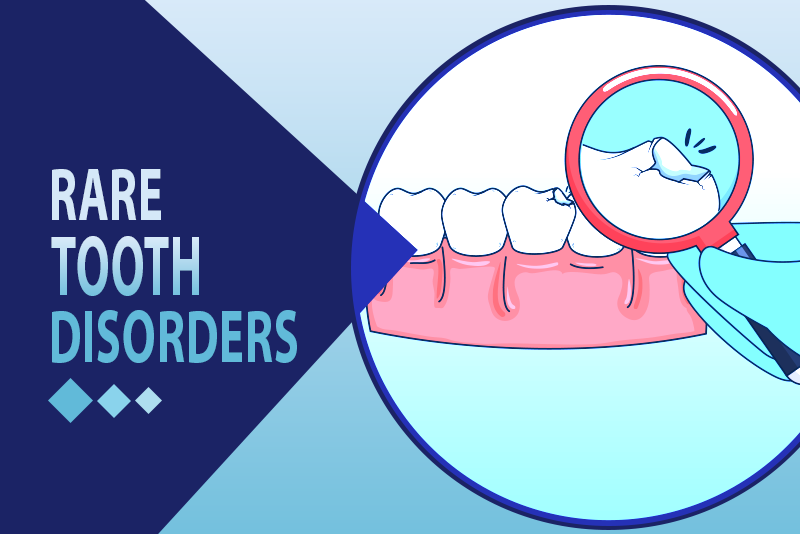There are many rare dental conditions that can cause major problems and affect daily living. In addition to treating them, dentists need to report these conditions on claims using the right ICD-10 codes. Dental billing and coding can be challenging due to coding guidelines and regulations, differences in interpretation and application of codes, and the complexity of certain dental procedures. Coders must be aware of the frequent updates and changes to dental codes. Dental procedures can vary in complexity and involve multiple steps, making it difficult to select the appropriate code. In some cases, there may be multiple codes that could apply, and the dental professional must determine which code best reflects the specific services provided. Proper documentation is crucial for accurate code assignment.
ICD-10 Codes for Rare Tooth Disorders
The ICD-10 codes for Rare Tooth Disorders come under K00 series.
- K00 disorders of tooth development and eruption
Anodontia
- K00.0 Anodontia
This rare genetic disorder is characterized by the complete absence of teeth. It can affect both primary and permanent teeth. Anodontia can occur as an isolated condition or as a part of a syndrome. When it is present as part of a syndrome, other abnormalities may also be present, such as hair or skin disorders, cleft lip or palate, and skeletal abnormalities.
Anodontia can have a significant impact on a person’s ability to eat, speak, and maintain proper oral health. Treatment options for anodontia may include dentures, dental implants, or orthodontic treatment. Genetic counseling may also be recommended for individuals with anodontia or a family history of the condition.
Hyperdontia or Supernumerary Teeth
- K00.1 Supernumerary teeth
This condition is characterized by an excessive number of teeth in the mouth. Shapes of extra teeth can be supplemental, tuberculate, compound odontoma, complex odontoma, or conical.
Geminated teeth, Talon cusps, Taurodontism
- K00.2 Abnormalities of size and form of teeth
Also known as double teeth, tooth germination is a rare anomaly that occurs when a single tooth bud develops into two teeth, resulting in a larger or distorted tooth with two chambers of tooth pulp and a single root. This condition can cause misalignment of the bite, tooth decay where the two chambers meet, or overcrowding of the teeth.
Also referred to as eagle’s talon and dens evaginatus, talon cusp is a dental anomaly that can result in an extra cusp or cusp-like projection on an anterior tooth, located on the inside surface of the affected tooth.
Taurodontism is a dental condition where the tooth’s pulp chamber and root are elongated. The tooth’s vertically enlarged pulp chamber will be almost three to four times larger than normal. The tooth will have a rectangular or cylindrical shape and the roots are often fused together. Taurodontism is a hereditary condition that can occur in isolation or as a part of a genetic syndrome. It is commonly found in molars, but can also affect premolars and incisors.
Regional Odontodysplasia
- K00.4 Disturbances in tooth formation
This rare dental developmental disorder is also known as “ghost teeth” or “odontogenic ghost.” The affected teeth appear to be opaque and have a ghostly or translucent appearance on X-rays. This disorder often results in discoloration, softness in your teeth, abnormal structure, and increased susceptibility to gum disease, swelling, and pain.
Amelogenesis Imperfecta/Dentinogenesis Imperfecta
- K00.5 Hereditary disturbances in tooth structure, not elsewhere classified
While amelogenesis imperfecta is a genetic condition that affects the development of tooth enamel, causing the teeth to be weak and prone to decay, dentinogenesis imperfecta is a genetic condition that affects the development of tooth dentin, causing the teeth to be discolored and brittle.
Hypohidrotic Ectodermal Dysplasia
- Q82.4 Ectodermal dysplasia (anhidrotic)
The anhidrotic/hypohidrotic ED (HED) is the more severe form and is associated with more dental defects like missing or misshapen teeth. Also, teeth can be small and/or have an abnormal shape.
Ameloblastoma
- D16.5 Benign neoplasm of lower jaw bone
Ameloblastoma is a rare, benign tumor that originates in the cells that form the enamel of the teeth. These tumors can occur anywhere in the jawbone, but are most commonly found in the mandible (lower jaw)
Dentigerous cyst
- K09.0 Developmental odontogenic cysts
This is a type of cyst that forms around an impacted tooth. It is a common type of odontogenic cyst and is usually benign. Dentigerous cysts are most commonly found in the mandible (lower jaw) and can occur at any age, but are most commonly diagnosed in the teenage years.
Gardner syndrome
- D12.6 Benign neoplasm of colon, unspecified
Gardner syndrome is a rare inherited disorder that affects multiple systems of the body, including the teeth and jaws. It is a type of familial adenomatous polyposis (FAP) and is caused by mutations in the APC gene.
Juvenile hyaline fibromatosis
- Q82.8 Other specified congenital malformations of skin
This is a rare genetic disorder that affects the connective tissue in the body, including the gums, teeth, and bone in the jaws. It is characterized by the formation of hard, fibrous nodules and tumors under the skin, in the joints, and in other tissues.
Langerhans cell histiocytosis
- C96.6 Unifocal Langerhans-cell histiocytosis
This rare group of disorders are characterized by the abnormal growth and accumulation of a specific type of white blood cell called Langerhans cells. It can also affect the bones and tissues of the mouth, including the gums, jawbone, and teeth.
Reporting these conditions correctly requires coding knowledge. An experienced dental coding company can help practices ensure accurate medical coding and billing for appropriate reimbursement.





